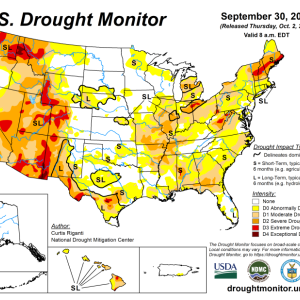Residential wells go dry as drought deepens across Maine: Ideally, 150% of normal precipitation needed over next few months
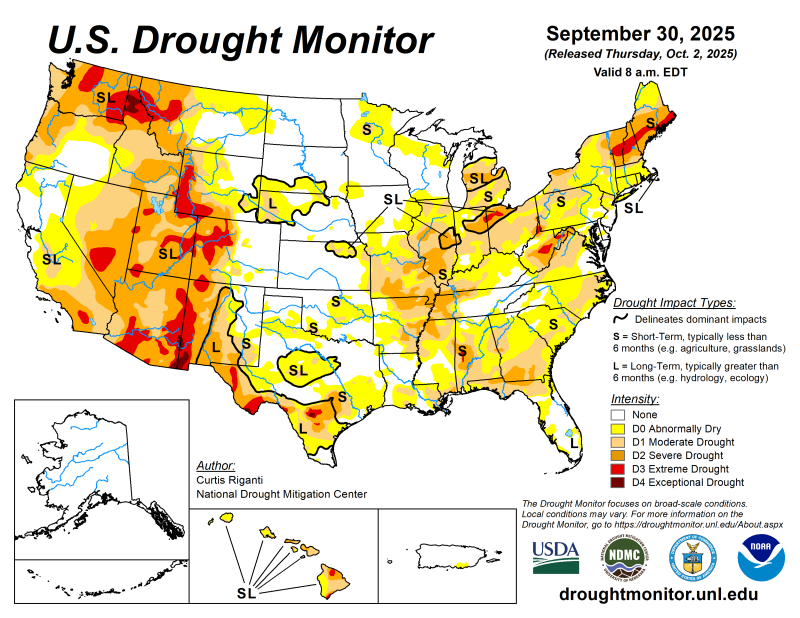 The U.S. Drought Monitor is jointly produced by the National Drought Mitigation Center at the University of Nebraska-Lincoln, the United States Department of Agriculture, and the National Oceanic and Atmospheric Administration. Map courtesy of NDMC.
The U.S. Drought Monitor is jointly produced by the National Drought Mitigation Center at the University of Nebraska-Lincoln, the United States Department of Agriculture, and the National Oceanic and Atmospheric Administration. Map courtesy of NDMC.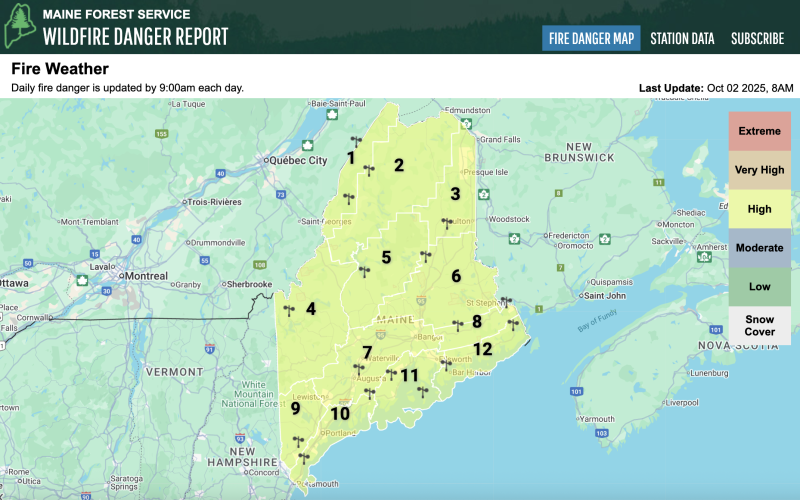 The Maine Forest Service has the entire state under a high fire danger warning.
The Maine Forest Service has the entire state under a high fire danger warning.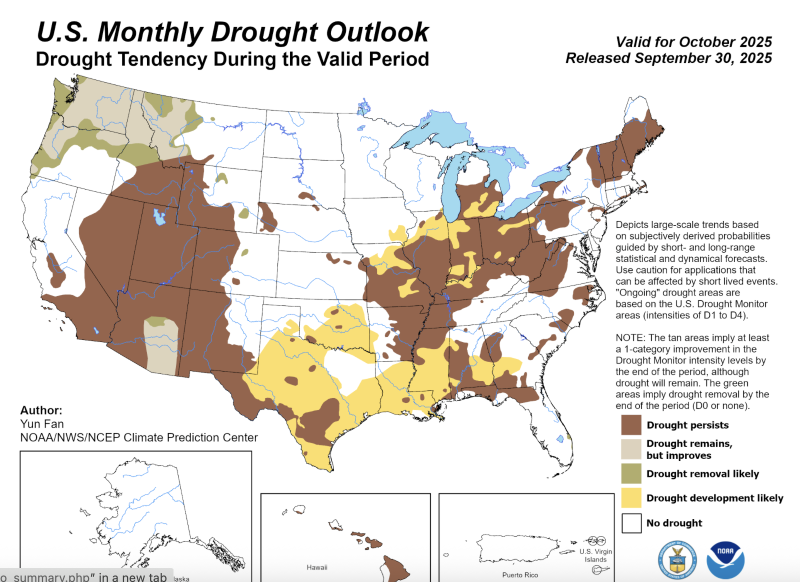 Maine and parts of the U.S. is suffering from drought conditions.
Maine and parts of the U.S. is suffering from drought conditions.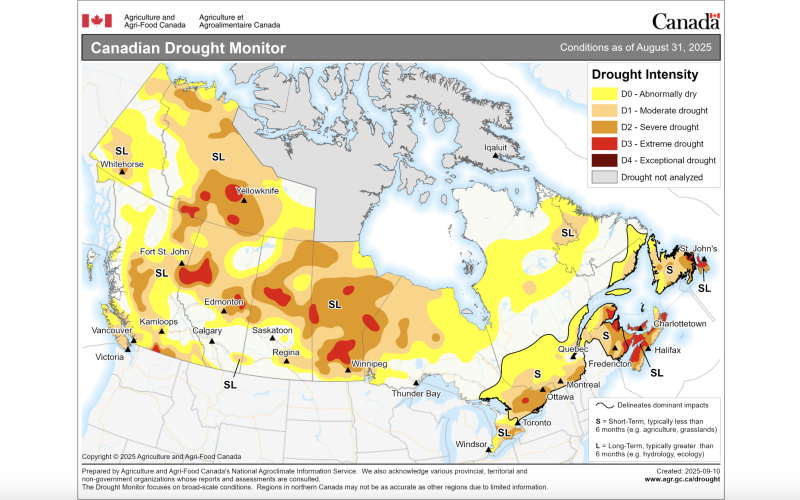 Canada's drought situation at the end of August, 2025.
Canada's drought situation at the end of August, 2025.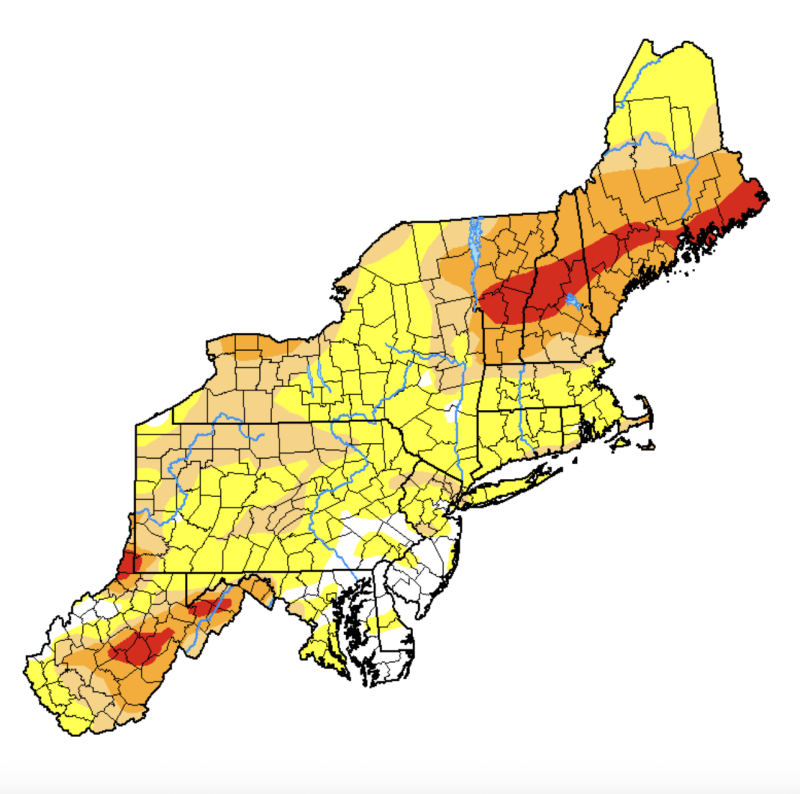 The Oct. 2 map from the U.S. Drought Monitor
The Oct. 2 map from the U.S. Drought Monitor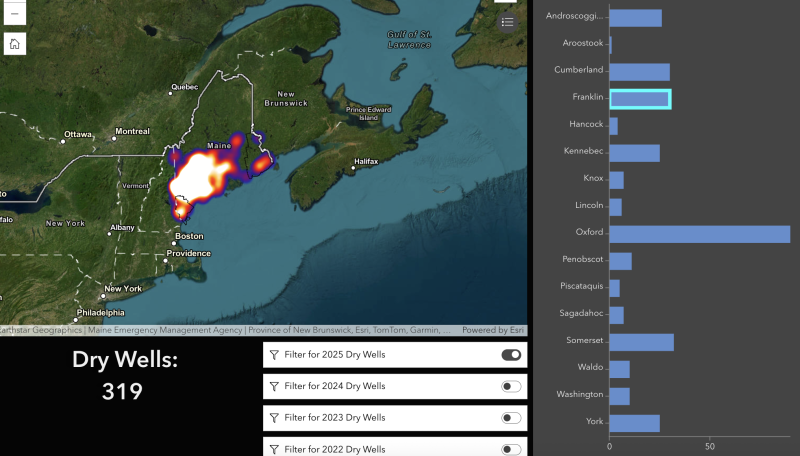
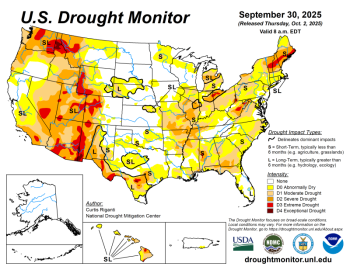 The U.S. Drought Monitor is jointly produced by the National Drought Mitigation Center at the University of Nebraska-Lincoln, the United States Department of Agriculture, and the National Oceanic and Atmospheric Administration. Map courtesy of NDMC.
The U.S. Drought Monitor is jointly produced by the National Drought Mitigation Center at the University of Nebraska-Lincoln, the United States Department of Agriculture, and the National Oceanic and Atmospheric Administration. Map courtesy of NDMC.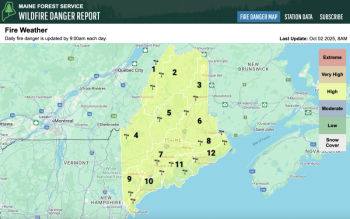 The Maine Forest Service has the entire state under a high fire danger warning.
The Maine Forest Service has the entire state under a high fire danger warning.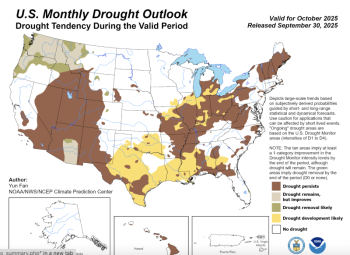 Maine and parts of the U.S. is suffering from drought conditions.
Maine and parts of the U.S. is suffering from drought conditions.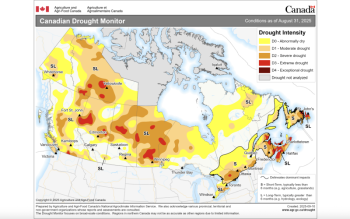 Canada's drought situation at the end of August, 2025.
Canada's drought situation at the end of August, 2025.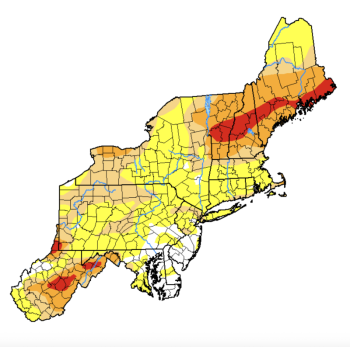 The Oct. 2 map from the U.S. Drought Monitor
The Oct. 2 map from the U.S. Drought Monitor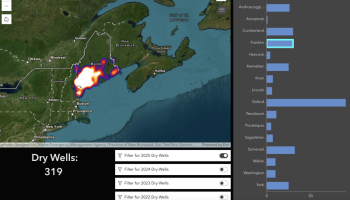
MIDCOAST — The ongoing drought of 2025 has deepened across Maine with approximately 319 known residential wells across the state reported to have gone dry. Compare that to a month ago, when a total of 21 dry private wells had been reported. Last week's heavy rain offered a brief respite, but not enough to quench the ground's thirst.
To the National Weather Service, as little as six inches above normal rainfall could be sufficient for some locations to end the drought, but the hardest hit areas: "may need as much as 12 inches of rainfall spread out over months to see full recovery. Generally speaking, much of drought-stricken Maine needs 150% of normal precipitation over the next few months to ameliorate drought conditions before the ground freezes."
What is ideal?
Steady, light-rain events with high absorption rates, the NWS said, in an update to the Maine Drought Task Force, which convened Oct. 2.
In Knox County, there are seven homes whose wells have dried up as of Oct. 3; 10 in Waldo County and six in Lincoln County.
This is information gathered by the State of Maine's Drought Task Force as residents whose wells have dried go online and file information with the Maine Emergency Management Agency.
MEMA asks residents to report their dried wells at its online survey.
"Data collected through these reports helps determine the scope and magnitude of private dry well conditions across the state," said MEMA. The agency adds: "Please note that submitting a report does not constitute a request for assistance. For help locating local community water resources, contact your Town or City municipal office."
While there are many drilled and dug wells in the three counties, the towns and cities have municipal water services.
Rockland, Thomaston, Camden and Rockport downtowns are serviced by Maine Water Company, which draws its water from Mirror Lake and Grassy Pond, both in West Rockport.
"Maine Water continuously monitors our water capacity and usage levels," said Maine Water's Corporate Communications Manager Richard Rathsack, Oct. 2. "We have not experienced the need to implement any conservation notices. The levels in Mirror Lake and Grassy Pond look lower, which is typical for this time of year, but we do not currently have any concerns about capacity."
According to MEMA, Oxford County is the hardest hit with 90 reported wells gone dry. Meanwhile, an estimated 87% of Maine’s population resides in drought-stricken regions.
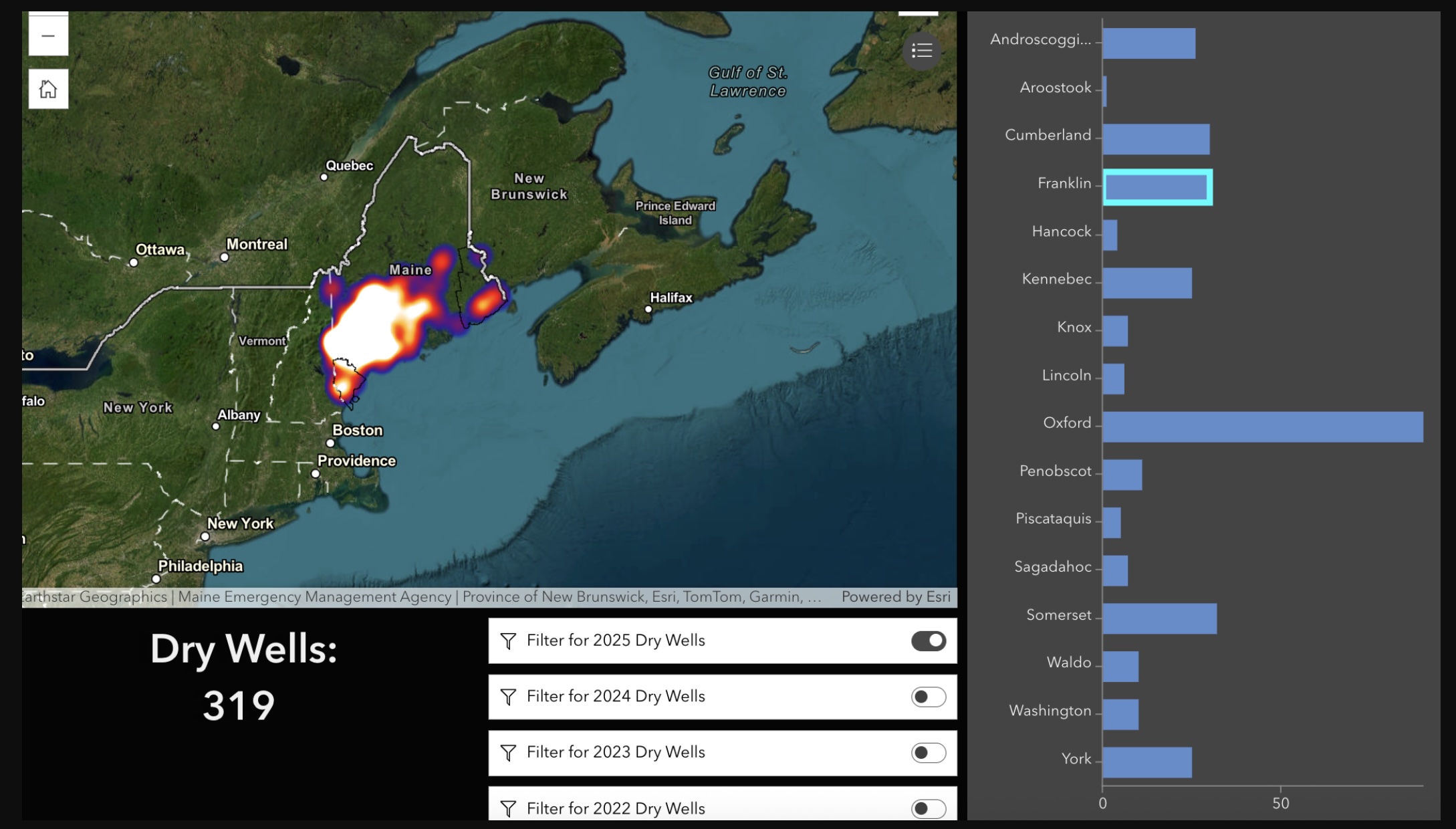
Drought conditions have worsened over the past four weeks, since the Task Force met at the beginning of September. Task Force meets monthly, when necessary, and comprises representatives from:
- USGS, New England Water Science Center, Maine Office (co-chair)
- Maine Emergency Management Agency (co-chair)
- National Weather Service Gray and Caribou offices
- Maine Geological Survey
- Department of Agriculture, Conservation and Forestry
- Department of Health and Human Services
- Maine Public Utilities Commission
- Maine Rural Water Association
- Maine Water Utilities Association
- Maine Department of Environmental Protection
- U.S. Department of Agriculture
- County Emergency Management Agencies impacted by the drought
As of Oct. 2, a swath, marked in red on the drought map, of extreme drought conditions broadened even more from early September and now spreads from Lake Champlain in Vermont, across New Hampshire to the Kennebec River Valley, through several Maine counties, including, Waldo, Hancock and Washington counties and then Down East to the Canadian Maritimes.
Above and below the extreme drought lines are even more regions In Maine that are in severe or moderate drought, marked in varying shades of yellow on the drought map.
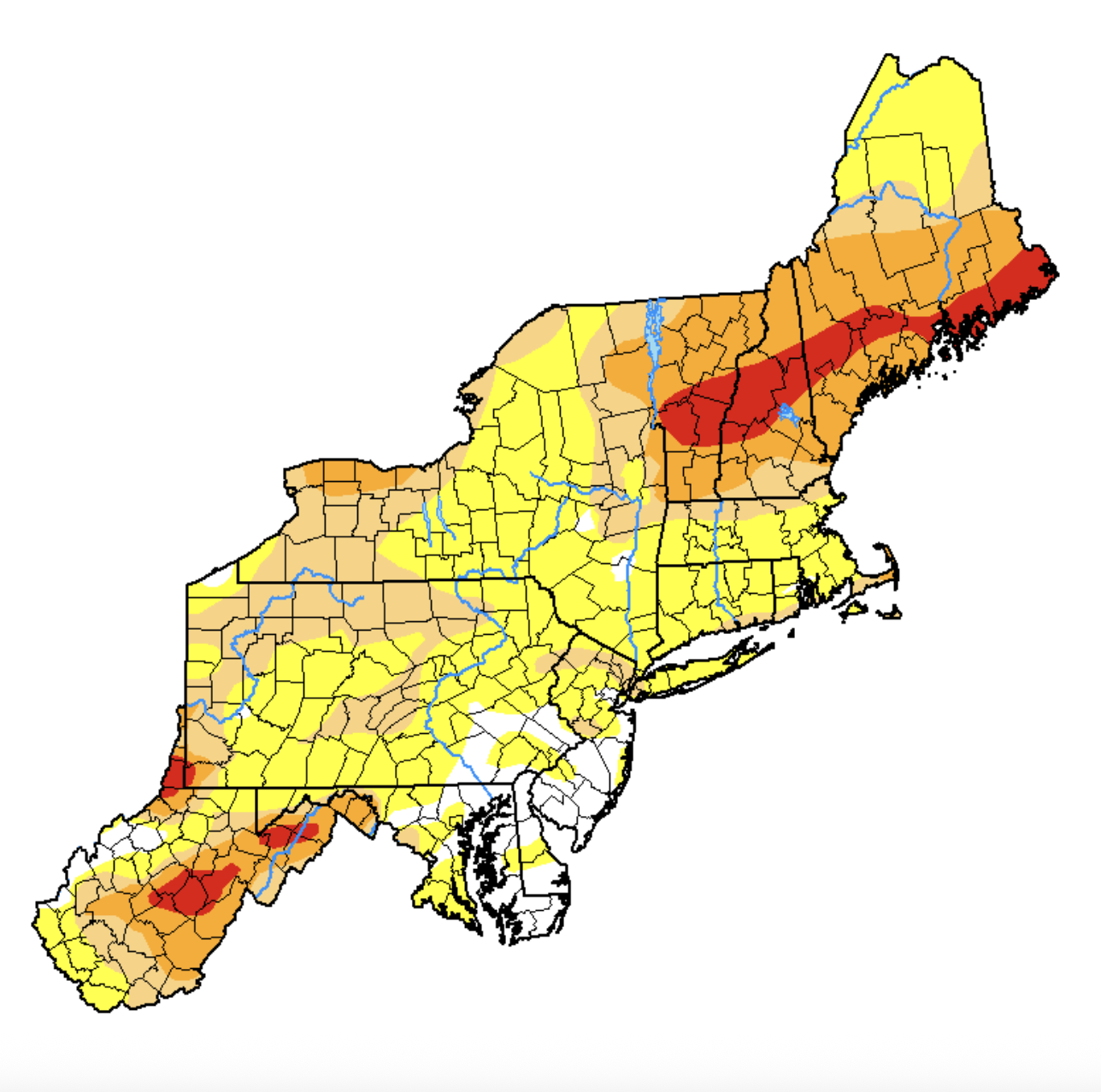
The Oct. 2 map from the U.S. Drought Monitor
Similar conditions are reported way down east to Canada, through New Brunswick, Nova Scotia, Newfoundland and parts of Quebec Province. Dozens of wells on Grand Manan, in New Brunswick, have also run dry, the Canadian Broadcast Corporation said in a Sept. 29 article.
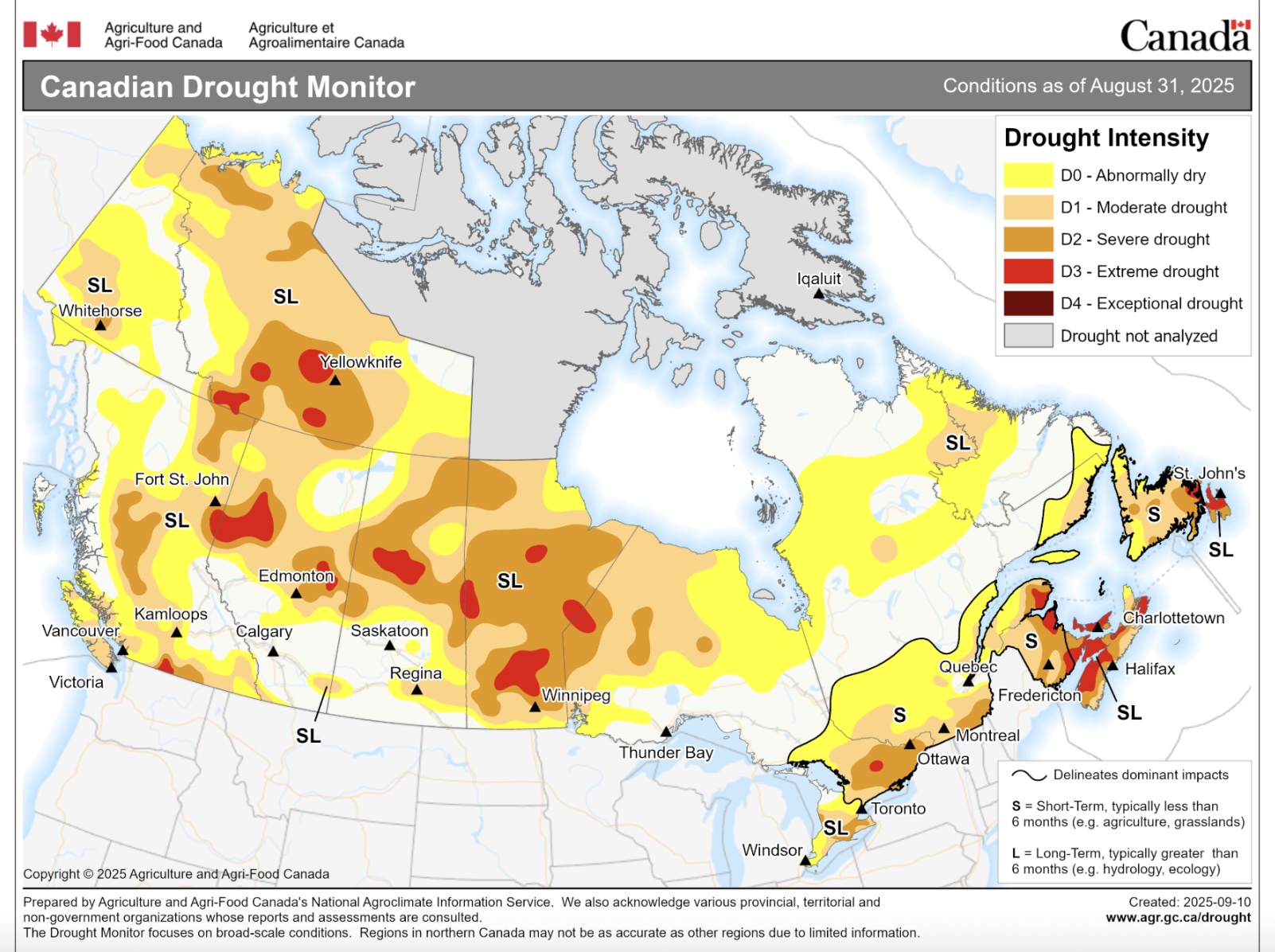
Any solace is attributed to increased dewpoints, which, said the National Weather Service, "should lead to excellent and longer duration recoveries at night."
"As resources become available, MEMA coordinates with County EMA partners on providing all available information on drought resources to municipal partners and the public to ensure widespread awareness," according to to the state's Emergency Management Agency. "MEMA is able to facilitate outreach across county and local partners to the specific individuals who have submitted a dry well report, and who have indicated interest in being contacted should resources become available. Resources have been scarce to date, so anyone individual who has reached out to MEMA directly for emergency water support has been directed to their town office."
According to Anne Fuchs, Mitigation and Recovery Division Director at MEMA: "Every town’s ability to offer resources to residents with dry wells will vary, and it would be best to direct this question to the municipal level. While private wells are the responsibility of the homeowner, some towns have been able to offer potable water resources to their residents."
While some suggest trucking in water from other water bodies and dumping it into dry wells, State of Maine statute prohibits adding water to a well unless the water hauler is licensed or authorized. There are specific regulations under which water can be added to wells from another source.
"The DWP [Maine CDC Drinking Water Program] strongly discourages homeowners from introducing water into their wells for three reasons:
-
- It’s illegal unless specifically allowed in the statute.
- The well is dry because the water table is below the well screen. Any introduced water will dissipate out into the aquifer.
- The delivered water may contaminate the aquifer with bacteria or other potential pathogens. For example, once iron bacteria is introduced into a well, it’s difficult (if not impossible) to remove, clogs the well screen, and turns the water reddish-brown."
At it's Oct. 2 meeting the Drought Task Force Thursday released updated information in a report that will be available here, and included an assessment of the National Weather Service.
The NWS anticipates no rain through early next week. The next chance of rain is October 9, "but confidence is low on the exact totals," the NWS said.
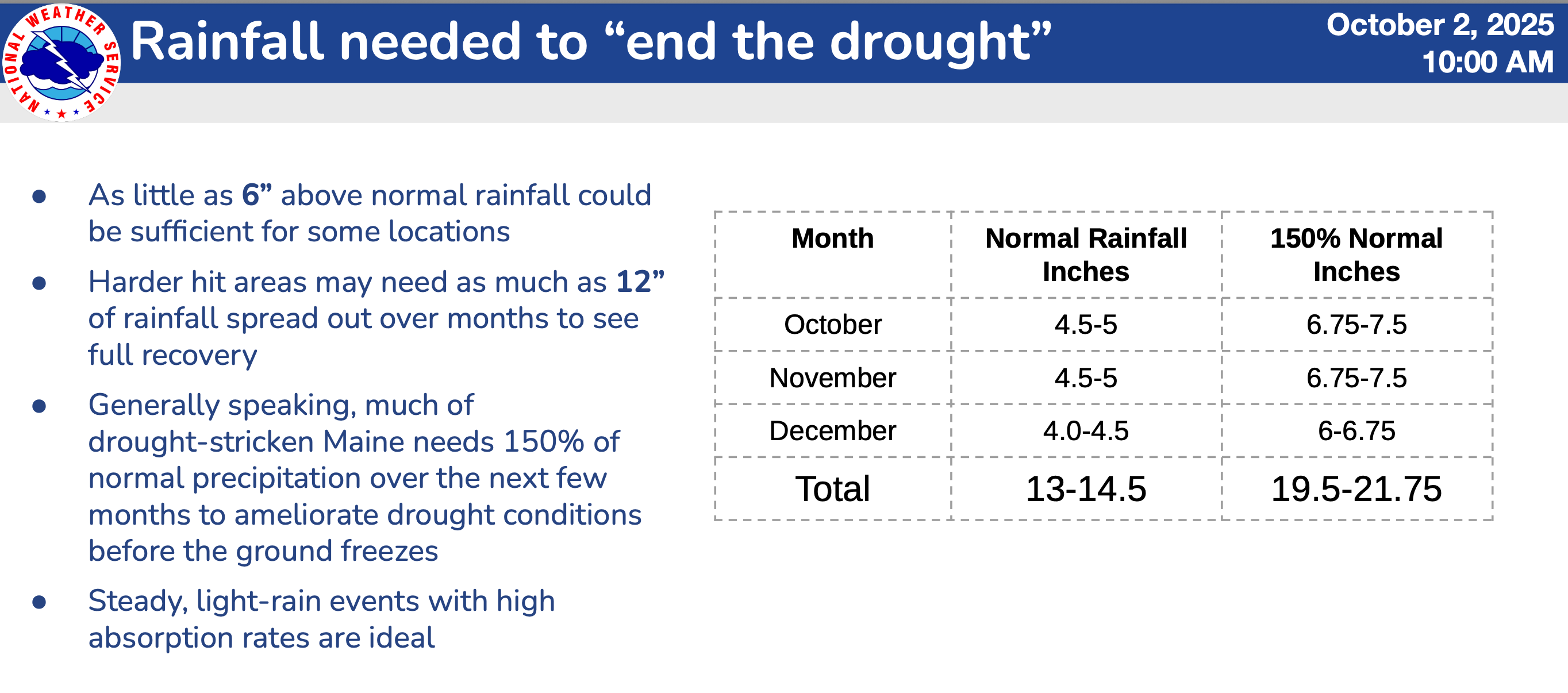
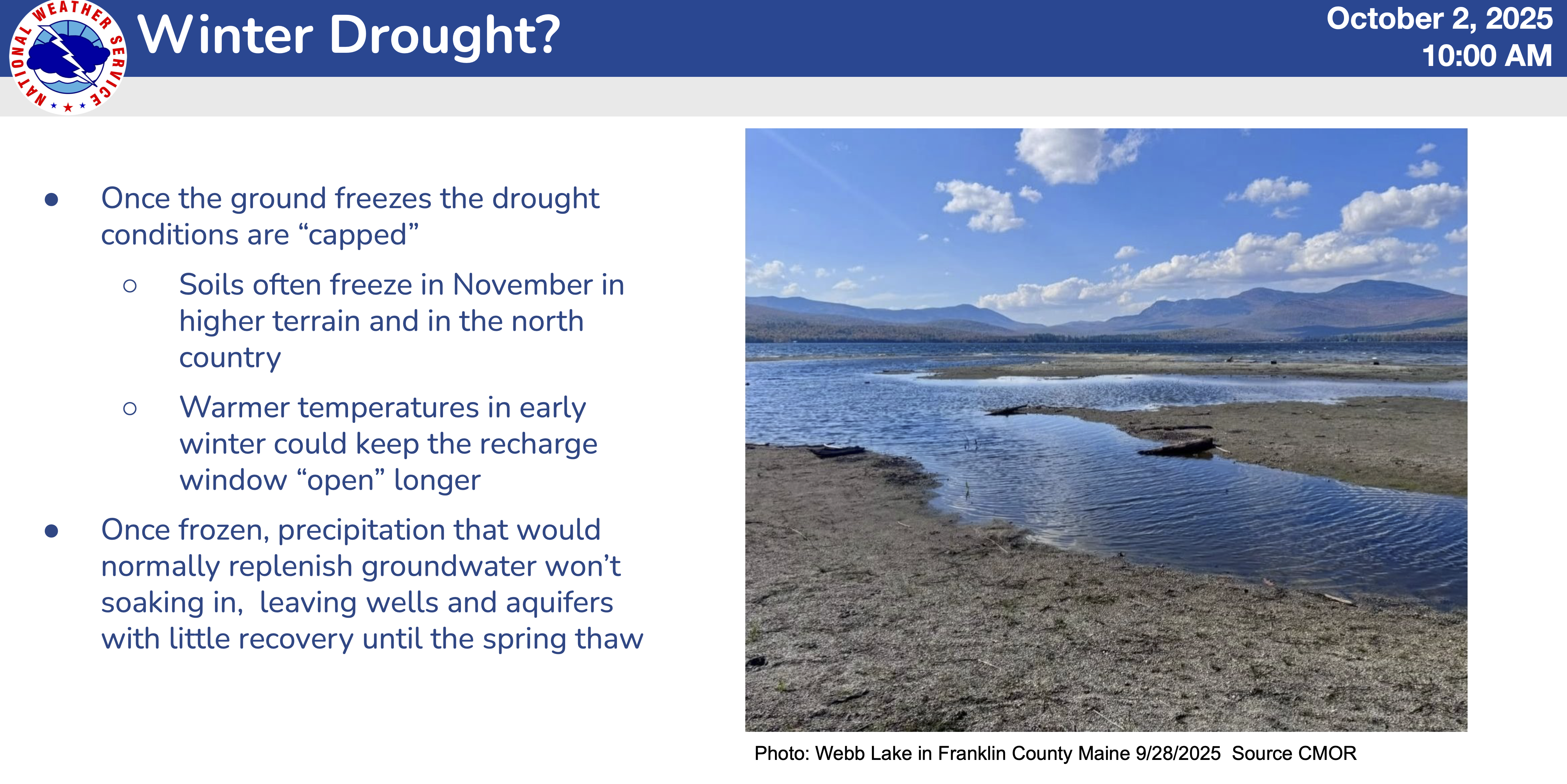
As current warm fall temperatures prevail, the trees, fields and vegetation continue to dry out, raising fire level dangers. Any accompanying winds exacerbate the fire dangers, and the Maine Forest Service has the entire state classified as high fire danger.
Open burn permits have been suspended. A small 3x3 cooking or warming fire on one's property is permissble without a permit.
The only way to restrict a campfire is by the a proclamation from the Governor.
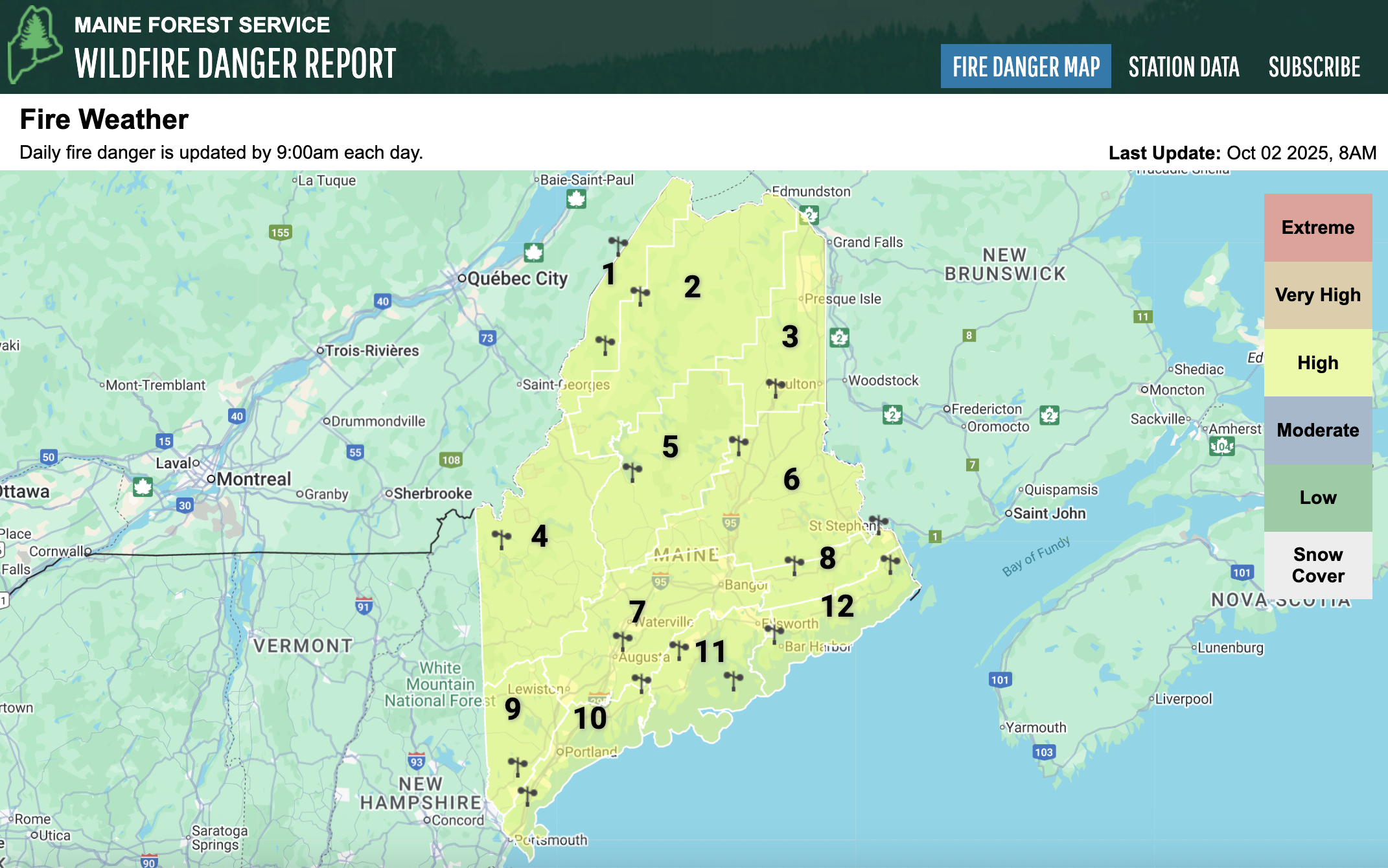
The national U.S. Drought Monitor is jointly produced by the National Drought Mitigation Center at the University of Nebraska-Lincoln, the United States Department of Agriculture, and the National Oceanic and Atmospheric Administration. It represents a cooperative effort between drought experts in Canada, Mexico and the United States to monitor drought across the continent on an ongoing basis.
Extreme drought (D3) expanded across northern New England, where impacts included poor crop and pasture conditions, along with low streamflow, low lake levels, and groundwater shortages. Some additional D3 was also introduced in the central Appalachians, including parts of West Virginia and neighboring states.
According to the U.S. Department of Agriculture, topsoil moisture in agricultural regions was rated at least 75% very short to short on September 21 in New York, Vermont, New Hampshire, Maine, and West Virginia.
And when the topsoil is bone dry, it is harder for rainwater to make its way down to veins of water running beneath ground, on which wells depend.
For low income homeowners requiring assistance with dry private wells (including drilling a well deeper, drilling a new well, laying pipes to the home, associated labor costs, etc.) refer to the USDA Single Family Housing Repair Program or the Maine State Housing Authority Home Repair Program.
During severe, damaging drought, the U.S. Secretary of Agriculture issued a disaster declaration to help farmers recover from crop damages and losses.
On Sept. 23, the Maine Dept. of Agriculture issued the following:
As of Thursday, September 18, six counties in Maine are now classified as D3 (Extreme Drought): Cumberland, Androscoggin, Kennebec, Franklin, Somerset, and Oxford. In addition, coastal counties stretching from Washington to Lincoln have remained in D2 (Severe Drought) for five consecutive weeks.
Any period at D3 triggers multiple federal programs, including:
- Livestock Forage Program (LFP): Provides payments to livestock producers for grazing losses. D2 status triggers one month of payments; D3 triggers three months.
- Emergency Assistance for Livestock, Honeybees, and Farm-Raised Fish (ELAP): Financial assistance for transporting water to livestock. Documentation of gallons hauled is required.
- Emergency Conservation Program (ECP): Cost share (up to 75%) to provide emergency water for grazing/confined livestock and existing orchards/vineyards. Eligible practices include pipeline installation, well construction, and spring/seep development.
- Emergency Farm Loans (EM Loans): Triggered by Secretarial Disaster Designations, offering low-interest loans to restore/reorganize operations, cover production costs, or refinance certain debts.
Additional Programs:
- Noninsured Disaster Assistance Program (NAP): Producers must notify their county FSA office of losses within 15 days of a natural disaster, or within 72 hours for certain hand-harvested and perishable crops. A completed Notice of Loss (CCC-576) is required.
- Tree Assistance Program (TAP): Available to orchardists and nursery growers experiencing natural disaster losses.
For assistance, please contact your local FSA office.
You may also sign up to stay informed through USDA updates.
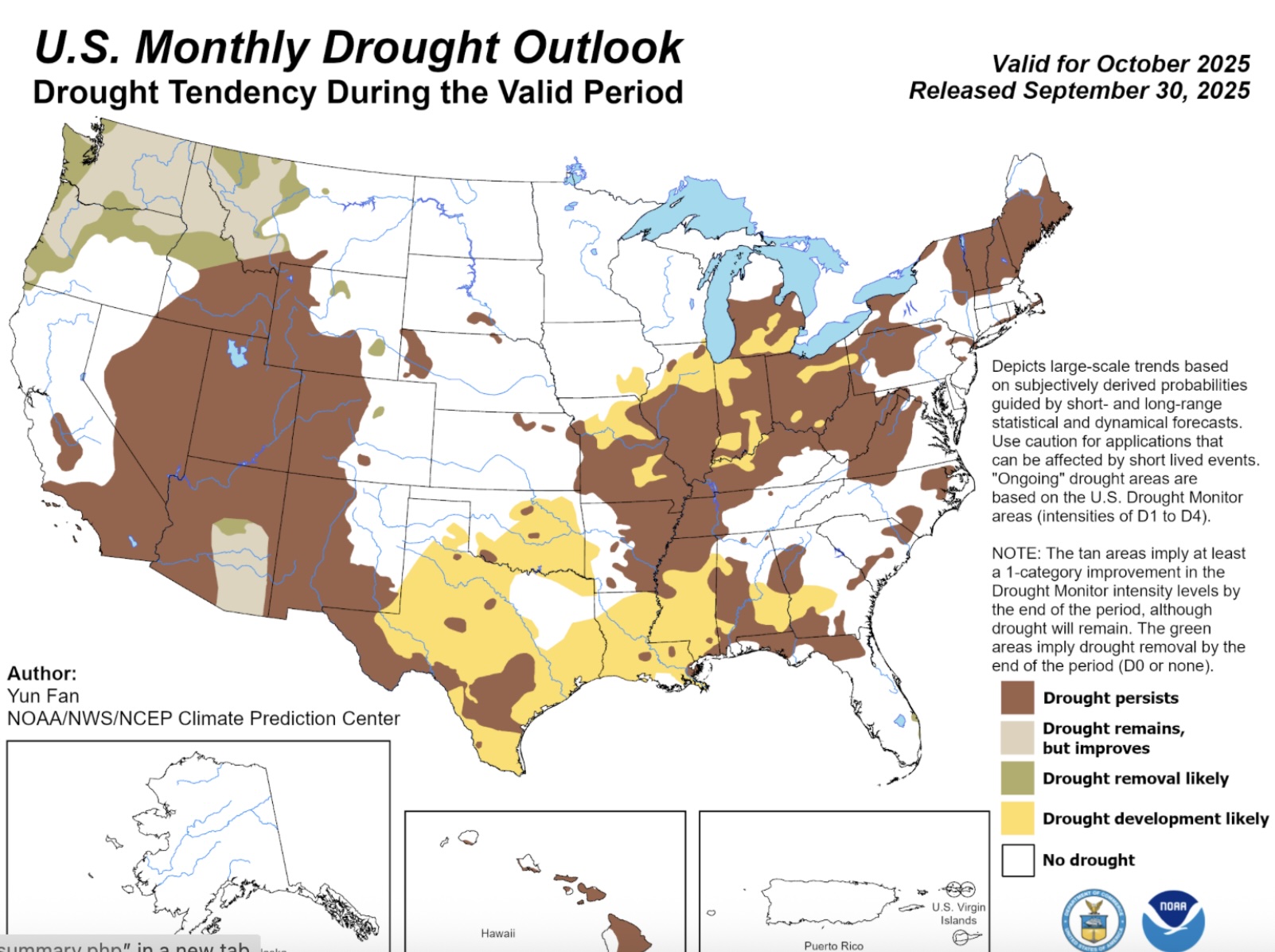 Important Actions for Maine Farmers
Important Actions for Maine Farmers
Report Losses Promptly
- Contact your local FSA office to report any drought-related crop or livestock losses.
- Even small losses matter – they help trigger federal disaster designations.
- Deadlines:
- Most crops: report within 15 days of the event, damage becoming visible, or normal harvest date.
- Hand-harvested/perishable crops (berries, tomatoes, grapes, herbs): report within 72 hours of loss.
Document Impacts
- Keep written records and photos of drought impacts on crops, pastures, livestock, and water systems.
- Save receipts for any water hauling, feed purchases, or emergency repairs.
Stay Informed
- Check the Maine Drought Taskforce for updates and resources
- Check the U.S. Drought Monitor (updated Thursdays).
- Subscribe to the Maine FSA monthly newsletter for program updates.
- Visit DACF’s agricultural water management webpage for drought strategies.
Review the Federal Assistance Programs detailed and hyperlinked above.
Plan Ahead
- Consider applying to DACF’s Farmer Drought Relief Program (next round expected in late 2025) for long-term investments in water management and irrigation.
Contact the DACF or your local FSA office with any questions
Emily Horton: Director of Policy & Community Engagement
Tom Gordon: Soil & Water Conservation Program Coordinator

